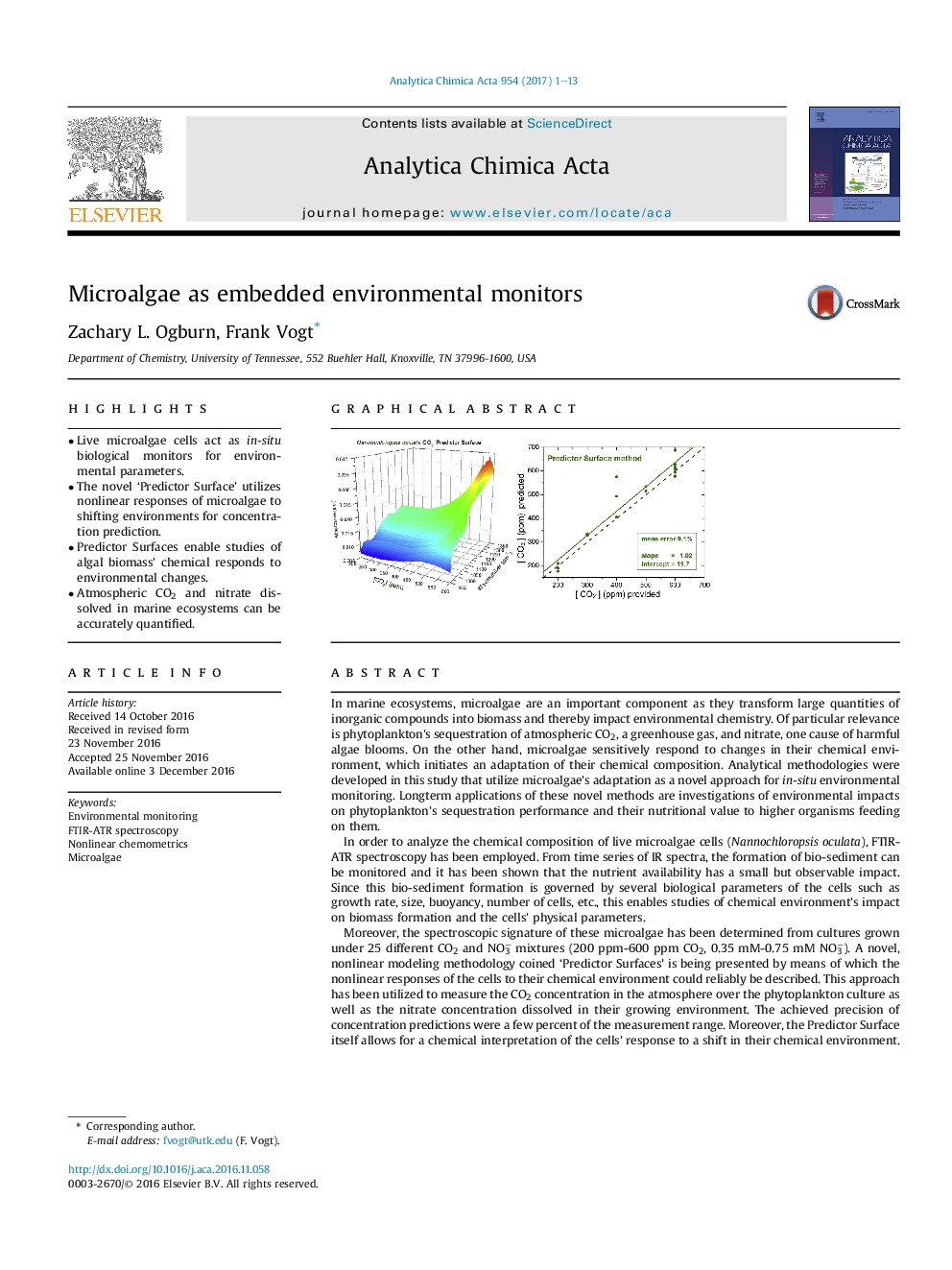| کد مقاله | کد نشریه | سال انتشار | مقاله انگلیسی | نسخه تمام متن |
|---|---|---|---|---|
| 5131148 | 1490878 | 2017 | 13 صفحه PDF | دانلود رایگان |

- Live microalgae cells act as in-situ biological monitors for environmental parameters.
- The novel 'Predictor Surface' utilizes nonlinear responses of microalgae to shifting environments for concentration prediction.
- Predictor Surfaces enable studies of algal biomass' chemical responds to environmental changes.
- Atmospheric CO2 and nitrate dissolved in marine ecosystems can be accurately quantified.
In marine ecosystems, microalgae are an important component as they transform large quantities of inorganic compounds into biomass and thereby impact environmental chemistry. Of particular relevance is phytoplankton's sequestration of atmospheric CO2, a greenhouse gas, and nitrate, one cause of harmful algae blooms. On the other hand, microalgae sensitively respond to changes in their chemical environment, which initiates an adaptation of their chemical composition. Analytical methodologies were developed in this study that utilize microalgae's adaptation as a novel approach for in-situ environmental monitoring. Longterm applications of these novel methods are investigations of environmental impacts on phytoplankton's sequestration performance and their nutritional value to higher organisms feeding on them.In order to analyze the chemical composition of live microalgae cells (Nannochloropsis oculata), FTIR-ATR spectroscopy has been employed. From time series of IR spectra, the formation of bio-sediment can be monitored and it has been shown that the nutrient availability has a small but observable impact. Since this bio-sediment formation is governed by several biological parameters of the cells such as growth rate, size, buoyancy, number of cells, etc., this enables studies of chemical environment's impact on biomass formation and the cells' physical parameters.Moreover, the spectroscopic signature of these microalgae has been determined from cultures grown under 25 different CO2 and NO3â mixtures (200Â ppm-600Â ppm CO2, 0.35 mM-0.75Â mM NO3â). A novel, nonlinear modeling methodology coined 'Predictor Surfaces' is being presented by means of which the nonlinear responses of the cells to their chemical environment could reliably be described. This approach has been utilized to measure the CO2 concentration in the atmosphere over the phytoplankton culture as well as the nitrate concentration dissolved in their growing environment. The achieved precision of concentration predictions were a few percent of the measurement range. Moreover, the Predictor Surface itself allows for a chemical interpretation of the cells' response to a shift in their chemical environment. This will open new approaches to study the link between concentration levels in an ecosystem and the biological consequences for this ecosystem.
Novel Predictor Surfaces describe how the IR signature of e.g. the marine microalgae Nannochloropsis oculata changes as a function of their chemical environment. By means of these nonlinear calibration models, for instance atmospheric CO2 can be quantified accurately.314
Journal: Analytica Chimica Acta - Volume 954, 15 February 2017, Pages 1-13